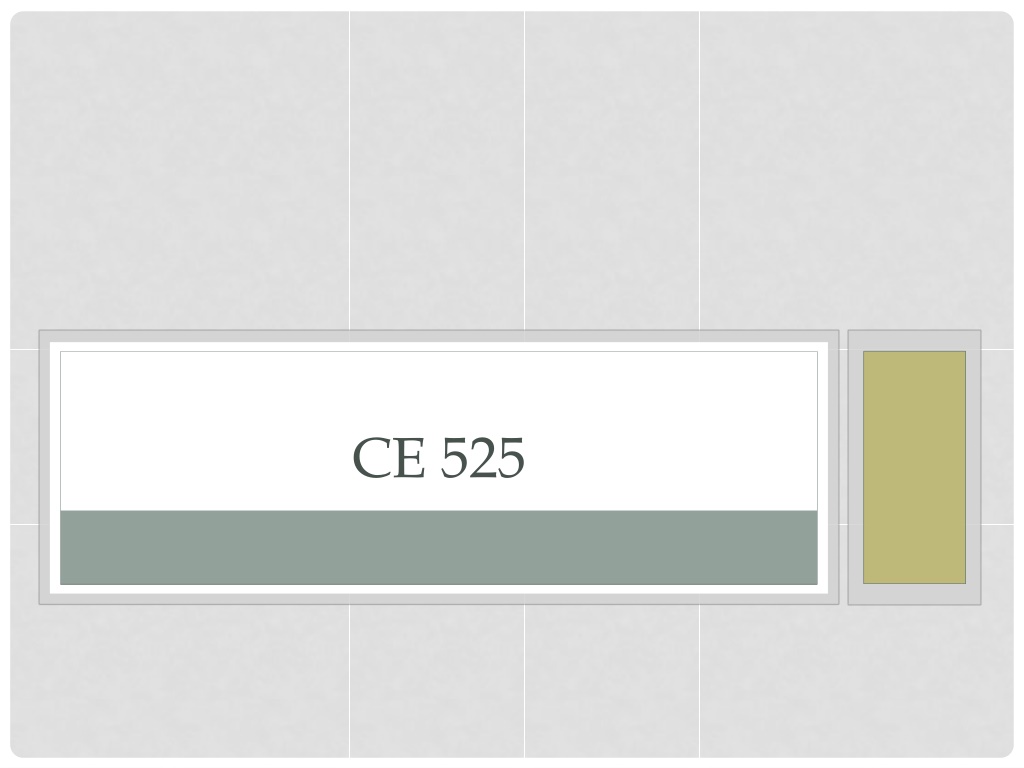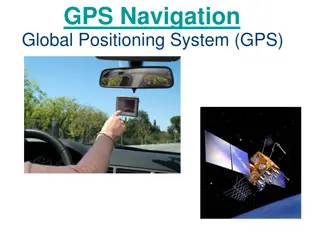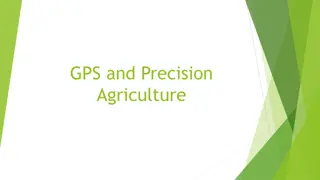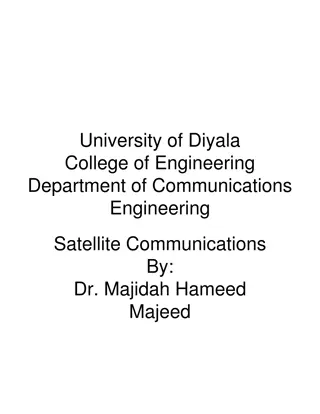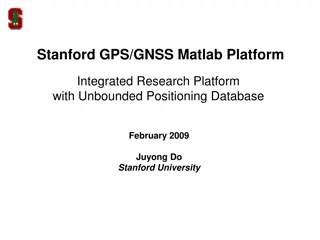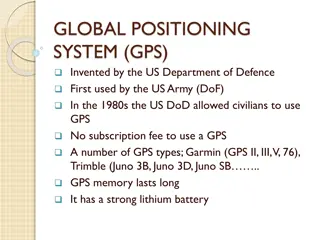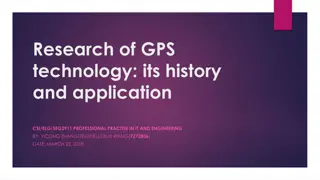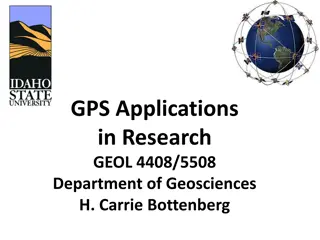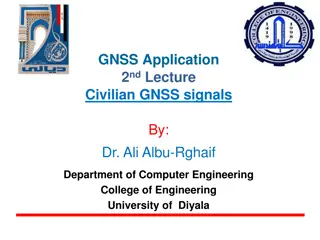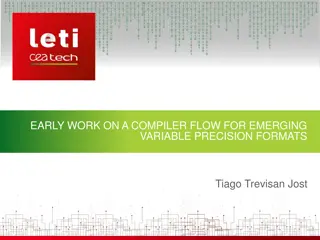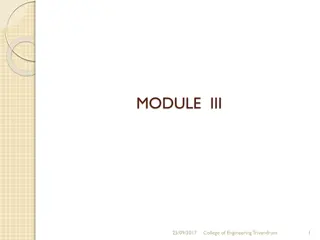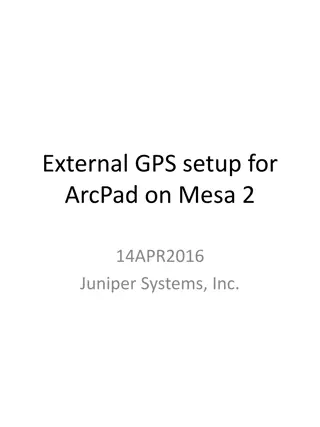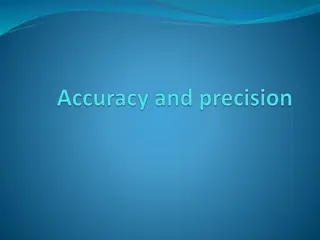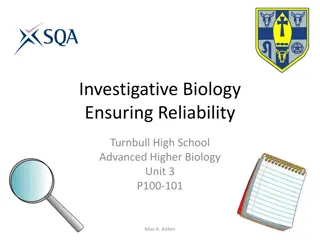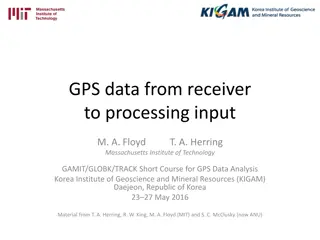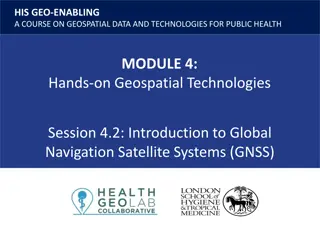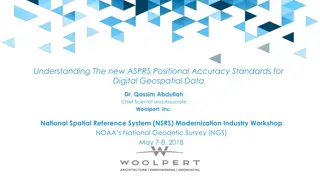Understanding Precision and Accuracy in GPS Data
Precision and accuracy play vital roles in interpreting GPS data effectively. Precision refers to how finely a value is described, while accuracy indicates the potential error in a reading. The content also highlights the significance of GPS data from phones, GPS precision in different decimal places, and the differentiation between the two concepts. It provides insights into how GPS data can be utilized with different levels of precision for various applications.
Download Presentation

Please find below an Image/Link to download the presentation.
The content on the website is provided AS IS for your information and personal use only. It may not be sold, licensed, or shared on other websites without obtaining consent from the author. Download presentation by click this link. If you encounter any issues during the download, it is possible that the publisher has removed the file from their server.
E N D
Presentation Transcript
ADDING PICTURES TO A MAP Anyone try it? What was your experience?
PRECISION AND ACCURACY Precision and accuracy are two different things. Accuracy is how much error there may be in a reading. Precision is how finely you describe a value (how many decimal places, if you will.) Precision is the opposite of variable error, accuracy is the opposite of constant error
GPS DATA FROM PHONE Team 1 Team 2 1 Second = 1/3600 of a degree (0.0003)
GPS PRECISION The first decimal place is worth up to 11.1 km: it can distinguish the position of one large city from a neighboring large city. The second decimal place is worth up to 1.1 km: it can separate one village from the next. The third decimal place is worth up to 110 m: it can identify a large agricultural field or institutional campus. The fourth decimal place is worth up to 11 m: it can identify a parcel of land. It is comparable to the typical accuracy of an uncorrected GPS unit with no interference. The fifth decimal place is worth up to 1.1 m: it distinguish trees from each other. Accuracy to this level with commercial GPS units can only be achieved with differential correction. The sixth decimal place is worth up to 0.11 m: you can use this for laying out structures in detail, for designing landscapes, building roads. It should be more than good enough for tracking movements of glaciers and rivers. This can be achieved by taking painstaking measures with GPS, such as differentially corrected GPS.
GPS PRECISION The seventh decimal place is worth up to 11 mm: this is good for much surveying and is near the limit of what GPS-based techniques can achieve. The eighth decimal place is worth up to 1.1 mm: this is good for charting motions of tectonic plates and movements of volcanoes. Permanent, corrected, constantly-running GPS base stations might be able to achieve this level of accuracy. The ninth decimal place is worth up to 110 microns: we are getting into the range of microscopy. For almost any conceivable application with earth positions, this is overkill and will be more precise than the accuracy of any surveying device. Ten or more decimal places indicates a computer or calculator was used and that no attention was paid to the fact that the extra decimals are useless. Be careful, because unless you are the one reading these numbers off the device, this can indicate low quality processing!
SIGN DATA ALL TOGETHER ArcGIS
ERRORS Why do we see the grid? iPhone4 iPhone5
KML FILE: KEYHOLE MARKUP LANGUAGE XML based file that expresses geographic annotation and visualization KML files may be bundled and compressed with other files that they reference as single KMZ files KML files hosted on Earth Browsers (public web server) Many applications display KML, including Google Earth, Google Maps, Google Maps for mobile, NASA WorldWind, ESRI ArcGIS Explorer, Adobe PhotoShop, AutoCAD, and Yahoo! Pipes.
QUIZ What is the difference between accuracy and precision?
POSTER PROJECTS Who hasn t seen Reg?
